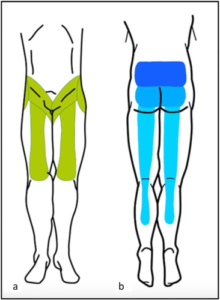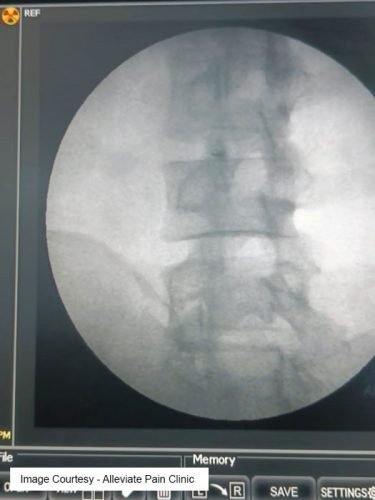Introduction
Lumbar facet joint pain is a common cause of lower back pain, affecting millions of people worldwide. These small joints in the spine play a crucial role in providing stability and allowing for various movements. However, when they become damaged or inflamed, they can lead to significant discomfort and a decreased quality of life. In this comprehensive guide, we will explore the various aspects of lumbar facet joint pain, including its location, character, radiation pattern, aggravating factors, differentiation from other types of back pain, its impact on quality of life, and the role of diagnostic investigations.
Location of the Pain: Paramedian
The first key sign to watch out for in lumbar facet joint pain is its specific location. Unlike some other types of back pain, which can be diffuse or radiate down the legs, lumbar facet joint pain is typically localized to a specific area. It is often described as paramedian pain, meaning it is located to one side of the spine, near the midline. The pain is commonly felt in the lower back, just to the side of the vertebrae.


Character of the Pain: Dull Aching Band-Like
The character of lumbar facet joint pain is often described as a dull, aching sensation. Patients frequently liken it to a band-like discomfort that wraps around their lower back. This pain may be constant or intermittent, and it tends to worsen with certain movements or activities.


Radiation Pattern of the Pain
While lumbar facet joint pain typically starts in the lower back, it can also radiate to other areas of the body. The radiation pattern of this pain is often more localized than the radiating pain associated with conditions like sciatica. It commonly spreads to the buttocks, thighs, and sometimes the groin. This radiation is usually limited to the same side as the affected facet joint.


Illustration of distribution pattern related to facet joint pain.
Specific Aggravating Factors: Extension
One of the hallmark features of lumbar facet joint pain is the exacerbation of symptoms with specific movements or positions. The pain is often aggravated by extension of the spine, which involves leaning backward. Activities such as standing up straight, arching the back, or even getting out of bed can trigger or worsen facet joint pain. Bending forward, on the other hand, can provide relief.


Differentiating Features from Disc Pain and SI Joint Pain
Lumbar facet joint pain can be mistaken for other common causes of lower back pain, such as disc-related issues and sacroiliac (SI) joint dysfunction. Understanding the differentiating features is crucial for an accurate diagnosis and effective treatment.
- Disc Pain : – Disc-related pain often involves radiating symptoms that travel down the leg (sciatica), whereas facet joint pain typically has more localized radiation. – Disc pain is often worsened by bending forward or sitting, whereas lumbar facet joint pain is aggravated by extension. – A physical examination and imaging studies like MRI or CT can help distinguish between disc-related pain and facet joint pain.
- SI Joint Pain : – SI joint pain is typically located lower and to the side of the lumbar spine, closer to the buttocks. – SI joint pain may radiate into the groin and upper thigh but is less likely to extend into the lower thigh and leg as compared to facet joint pain. – A thorough physical examination and diagnostic injections can help differentiate between SI joint pain and lumbar facet joint pain.
Impact on Quality of Life
Lumbar facet joint pain can have a significant impact on a person’s quality of life. The chronic and often debilitating nature of this condition can lead to physical limitations, emotional distress, and reduced overall well-being. Individuals with facet joint pain may experience:
- Limited mobility and difficulty performing daily activities.
- Disrupted sleep patterns due to pain, particularly when lying down.
- Emotional distress, including anxiety and depression, stemming from persistent pain and its effects on daily life.
- Decreased work productivity and potential job-related challenges.
Addressing lumbar facet joint pain through proper diagnosis and treatment can substantially improve the quality of life for those affected.
Findings on Investigation: Clinical Diagnosis vs. Imaging
While diagnostic imaging like MRI and CT scans can be valuable tools in assessing spinal conditions, lumbar facet joint pain is often diagnosed clinically. This means that healthcare providers rely on a combination of patient history, physical examination findings, and response to diagnostic injections to confirm the diagnosis.
- Patient History : – A detailed history helps identify specific symptoms, such as the location, character, and aggravating factors of the pain. – Patients may report a history of trauma or repetitive strain as potential triggers for facet joint pain.
- Physical Examination : – During a physical examination, a healthcare provider may perform tests and maneuvers to reproduce the patient’s pain, helping to pinpoint the source. – Tender points over the affected facet joints can be identified through palpation.
- Diagnostic Injections : – Facet joint injections involve the injection of local anesthetics and steroids into the suspected facet joint under fluoroscopic guidance. – Pain relief following these injections can provide strong evidence of facet joint involvement and support the diagnosis.


Diagnostic Intrarticular Facet Joint Injection under Fluoroscopy
Conclusion
Lumbar facet joint pain is a common and often misunderstood cause of lower back pain. Recognizing the signs and symptoms associated with this condition, such as its paramedian location, dull aching character, radiation pattern, aggravating factors like extension, and differentiation from other sources of back pain, is essential for accurate diagnosis and effective treatment. Facet joint pain can significantly impact an individual’s quality of life, leading to physical limitations and emotional distress. While imaging studies like MRI and CT scans can be useful, clinical diagnosis, including a thorough patient history, physical examination, and diagnostic injections, remains the primary method for confirming lumbar facet joint pain. Early recognition and appropriate management can lead to improved outcomes and a better quality of life for those suffering from this condition. If you suspect you may have lumbar facet joint pain, it is crucial to consult with Experts such as AT ALLEVIATE PAIN CLINIC, for a comprehensive evaluation and personalized treatment plan.



